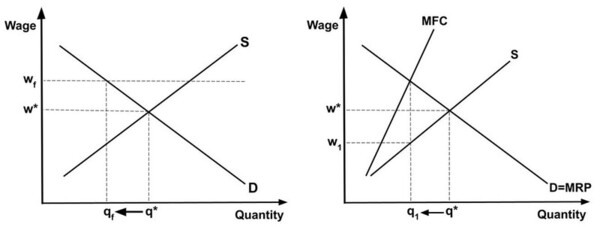Long-run effects of minimum wage on labor market dynamics
(1) Winston Churchill High School, (2) National Institutes of Health
https://doi.org/10.59720/24-097
The topic of minimum wage in the United States (U.S.) has been and continues to be hotly debated by politicians and economists, with no agreement on the appropriate level. Critics of higher minimum wage cite the standard economic theory of supply and demand, while proponents point to monopsonies: market structures where a single buyer dominates, in this case, the labor market. Raising the minimum wage may initiate market exit for some firms, shift some industries to become more capital-intensive, and result in low-skilled worker layoffs and reduced worker benefits. This study tested the hypothesis that increasing the minimum wage would have negative effects on the annual average employment, taxable wages, and number of firms in the market. Using local projection framework, we analyzed the long-run effects of minimum wage policy, namely effects that can occur after multiple years, using panel data from all U.S. states and territories from 2010 to 2019. We used local projections with two-way fixed effects to estimate the dynamic effect of minimum wage on annual average employment, taxable annual wages, and average annual firm count. We found that, in the long run, raising the minimum wage correlated negatively with employment and taxable wages but had no impact on firm count.
This article has been tagged with: